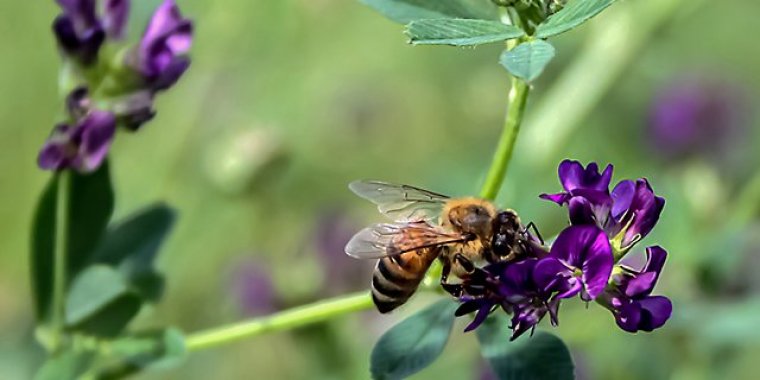| News / Science News |
Honey Bees More Faithful to Their Flower Patches Than Bumble Bees
Honey bees are more faithful to their flower patches than bumble bees when it comes to returning to collect more pollen and nectar, according to a study by U.S. Department of Agriculture Agricultural Research Service scientists.

Honey bees are more faithful to their flower patches than bumble bees when it comes to returning to collect more pollen and nectar. Photo: Fabiana Fragoso
Overall, 76 percent of honey bees in the study revisited the same plot of alfalfa flowers in contrast to just 47 percent of eastern bumble bees.
But size does matter, especially to bumble bees. They were more faithful to larger flower patches, while the likelihood of honey bees returning to a flower patch was not affected by patch size.
Large patches in the study were nearly 15 by 15 yards, each planted with 225 plants, more than twice as many as the small patches, which were about 10 by 10 yards with 100 alfalfa plants each.
To remain faithful to a specific location, an insect or animal requires reliable spatial memories enabling them to navigate complex landscapes and repeatedly return to the same site.
Both honey and bumble bees have demonstrated this ability to return to previously visited foraging locations, so there must be other species-specific factors to explain the differences in patch fidelity observed between the two species, explained ecologist Johanne Brunet with the ARS Vegetable Crops Research Unit in Madison, Wisconsin, who led the study along with postdoctoral associate Fabiana Fragoso.
Differences in patch fidelity could be the result of bumble bees' more explorative foraging behavior—their willingness to invest individually in foraging, often visiting more than one type of flower per foraging bout—compared to honey bees' more highly developed communication system—the honey bees' well-known waggle dance.
Honey bee foragers perform the dance when they return to the hive to share the location of valuable food sources with other foragers; bumble bees do not.
"So higher patch fidelity of honey bees, relative to bumble bees, may reflect a greater aversion to risk, be it in terms of wasting energy and resources or encountering predators" Brunet said. (Agricultural Research Service)
YOU MAY ALSO LIKE





